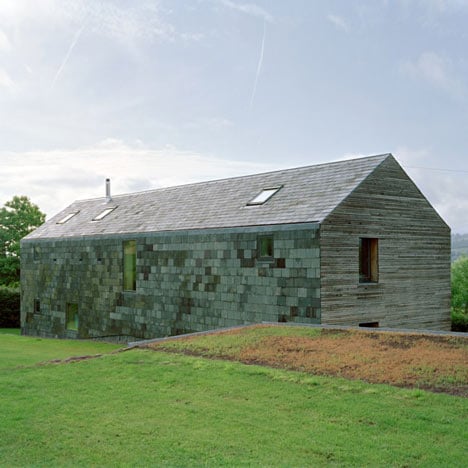
Ty Pren by Feilden Fowles
Slate roof tiles extend down the exposed north facade of this house in Wales by London studio Feilden Fowles.
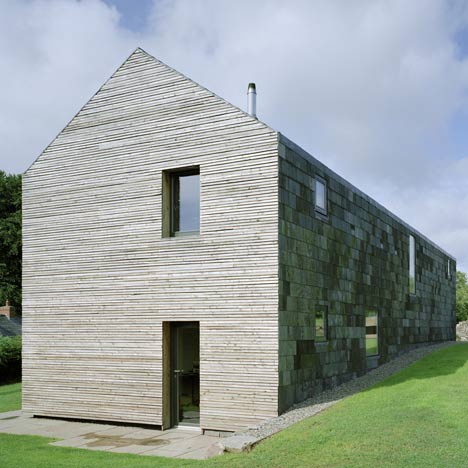
Called Ty Pren, the gabled timber-framed building is clad on three sides in larch felled from the owners' land.
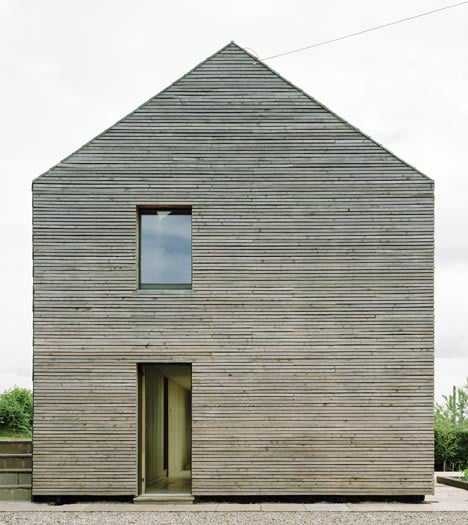
More trees have been planted nearby in anticipation of replacing the larch cladding in 25 years' time.
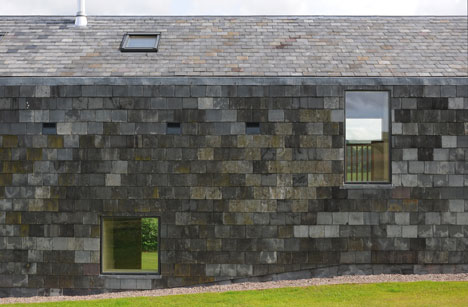
The Welsh slate used for the roof and north wall was reclaimed from demolished houses on the estate.
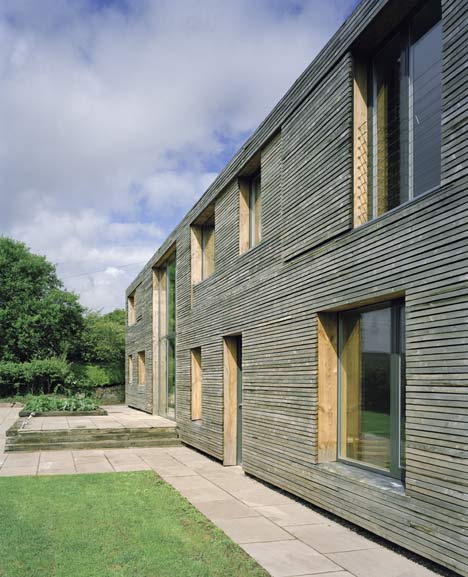
More residential architecture on Dezeen »
The following information is from the architects:
TY PREN, Trallong, South Wales
Situated in the midst of the Brecon Beacons, this linear Greenfield site in the village of Trallong has a southerly aspect and fine views towards Pen Y Fan. The rich local vernacular inspired the concept of a modern 'long house', following the contours of the land, embedding itself in the slope of the hill and responding to the prevailing conditions.
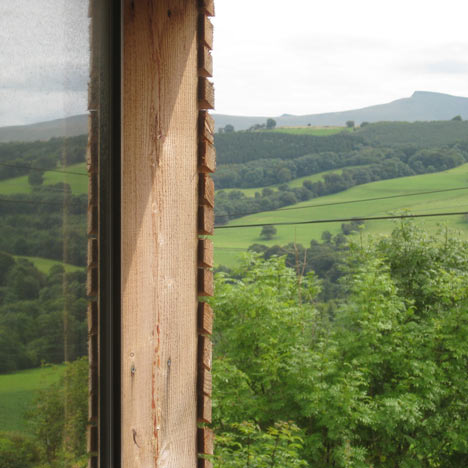
We spent two years researching and developing this design through site visits, models and prototypes. The design evolved into a crisp extrusion using skilled craftsmen to deliver a high-tech building. This period was used to procure local materials, research and to develop our Welsh vernacular adaptation. The typology of the long house leant itself to a passive solar plan, enhanced by the topography and aspect of the site.
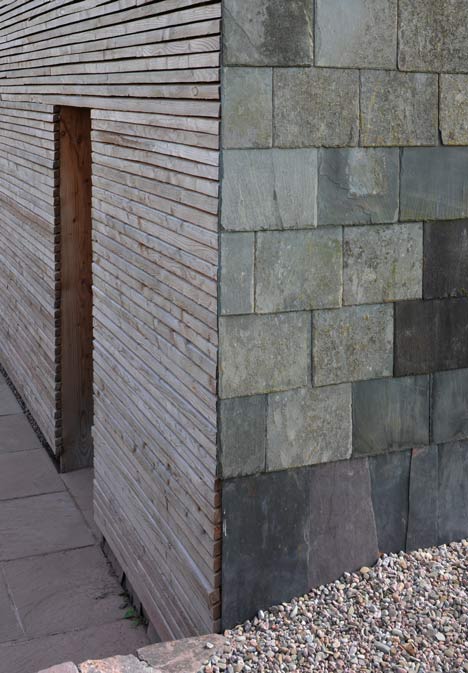
Contemporary construction techniques have delivered a thoroughly modern and high performance building, which responds to the landscape. The design was environmentally driven throughout. The passive solar design strategy uses every natural energy source available, and supplements these with active features such as the log boiler.
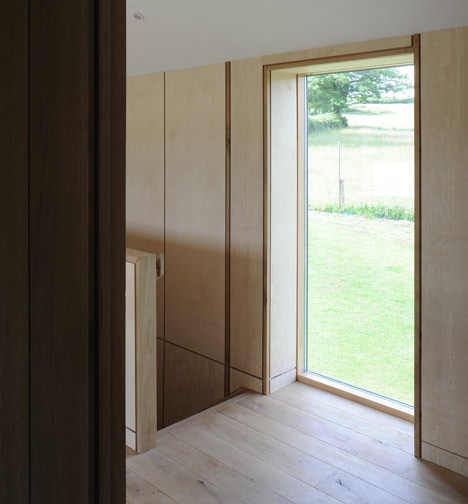
Project History/ Background
Ty Pren was first conceived in 2005 by our clients, Gavin and Vina Hogg, committed environmentalists responsible for managing the Penpont Estate (recently awarded the Forestry Commission’s ‘Wales Business and Sustainability’ award), with the desire to create a uniquely environmental building drawing strongly from the welsh vernacular.
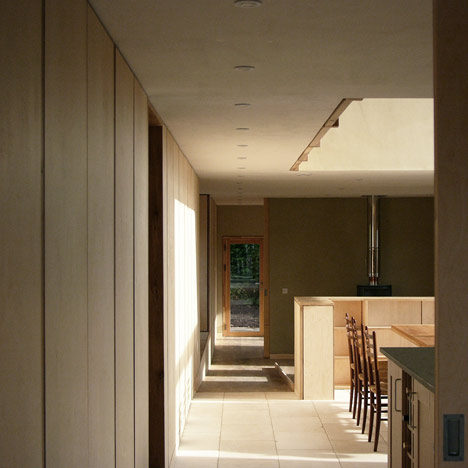
They placed their faith in Feilden Fowles, a young design team straight out of Part 1 and embarking on our first major project. This precedent of mutual trust and good will underpinned by a shared commitment to sustainability and green design, was shown by the entire design and construction team. This enabled the delivery of an exceptional building, small in scale but with huge ambitions.
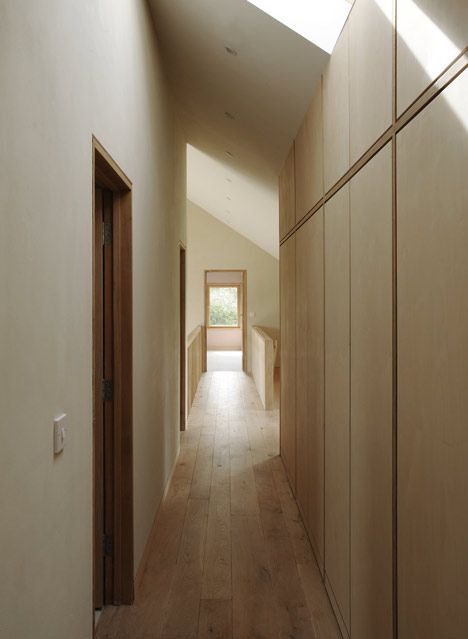
The client, acting as a construction manager, had an holistic environmental approach that facilitated the efficient delivery of a sustainable building within a tight budget, and ensured both the design and its delivery remained under continued scrutiny. The embodied energy of materials was under constant review and often took precedent over cost.
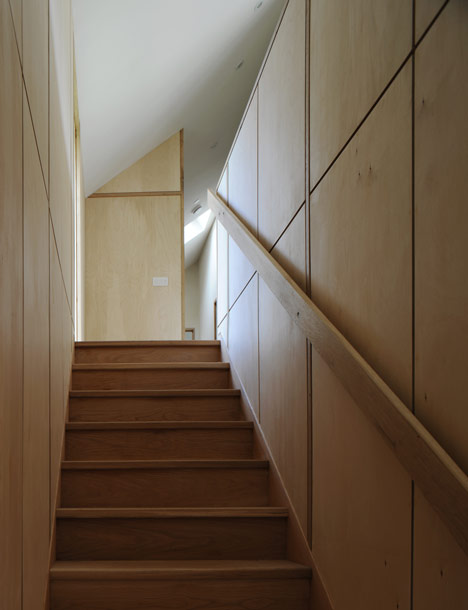
Design Approach
Due to the particularly sensitive location, situated on the edge of the Brecon Beacons national park, discussions on the vernacular were numerous throughout the early stages of design. Phrases like ‘sense of space’ and ‘local identity’ are abundant in the current debate regarding Welsh Architecture. Mathew Griffith’s suggested in ‘About Wales’ that ‘...the concept of ‘place’ is located at the heart of a fresh way of doing things. We need to be more effective in defining both the character of places and the value and significance that people attach to them...’
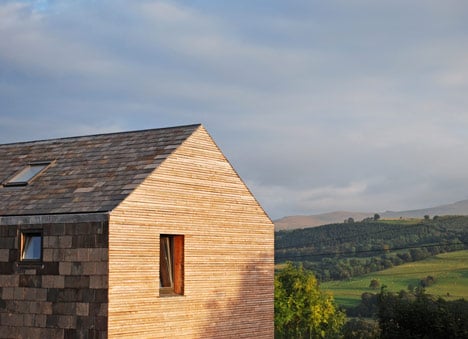
The real strength and identity of the Welsh culture is found in their simple plain chapels and vernacular buildings embedded in the counrtyside, gradually added to and elaborated. We were keen to take reference from these while avoiding simply reproducing an explicit version of the historic vernacular, an approach that would devalue the original. Instead we hoped to reinterpret, not necessarily by imitating historic details or using authentic materials, but through a subtle reinterpretation of familiar forms and ideas coupled with an holistic approach to environmental sustainabilty.
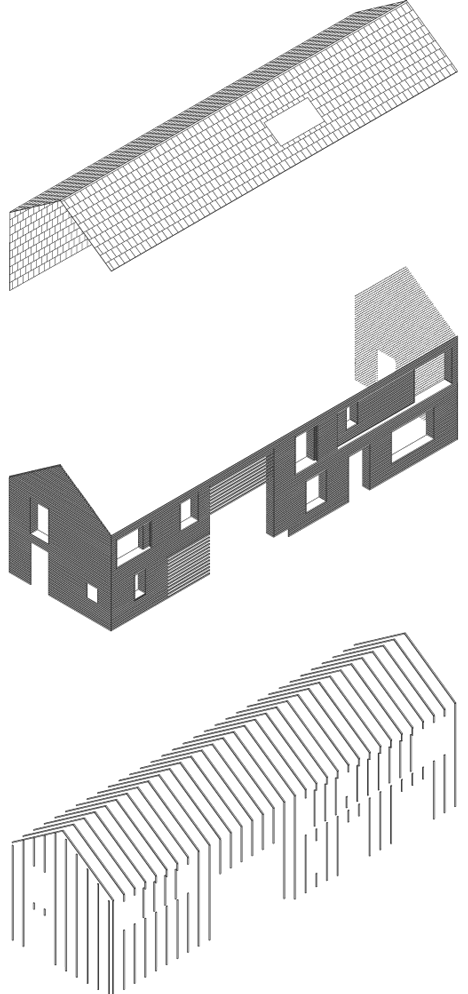
Passive Solar Design
Analysis of the seasonal sun paths determined the building’s location in order to maximise solar gain, views over the valley, and provide a south-facing garden to grow produce. The radical design was backed by a forward-looking planning department, who recognised the potential for the building to set a precedent for future sustainable housing. The compact design is 20m long and 6m deep, forming a sealed box that opens to the south and selectively frames the northern views. Internally, the building is less than 6m deep, enabling natural light and optimal cross and stack ventilation throughout.
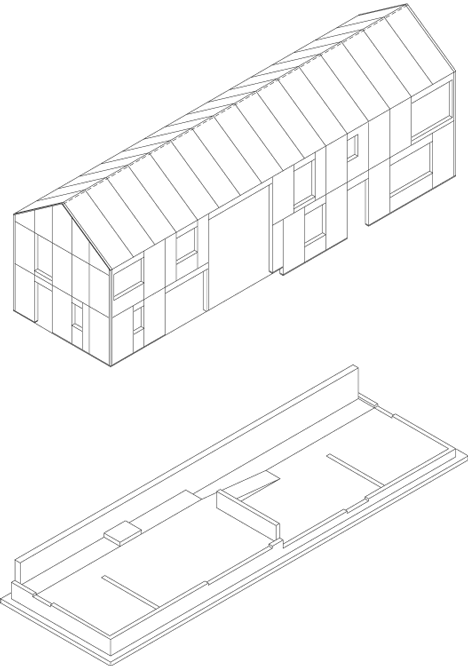
The 1 m deep north wall creates a buffer that runs the length of building and accommodates the services, stairs, storage and en-suite bathrooms. The south facing elevation and fenestration use optimal proportions of glazing; approximately 30% of the south elevation is glazed compared with about 5% of the northern elevation. Deep window reveals and sliding shutters prevent excessive solar gain in the summer, while the flush north windows emphasise the building's clean form. All these measures are designed to maximise solar gain in the winter and minimise overheating during the summer.
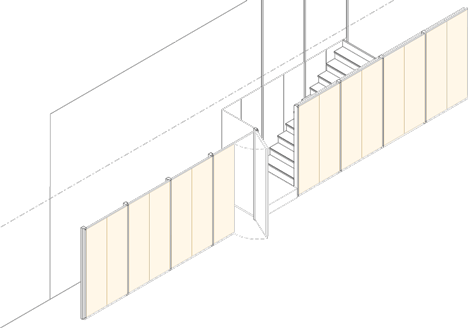
Active Design Features
From the outset, we collaborated with “Green Earth Energy” environmental engineers who helped design and fit the services. Over £25,000 was invested in green technologies; nearly 10% of the overall budget, with a further £20,000 on high performance Danish windows. The active heating strategy combines hot water from the 8KW log boiler and the solar collectors in a 500 litre accumulator tank located in the north wall.
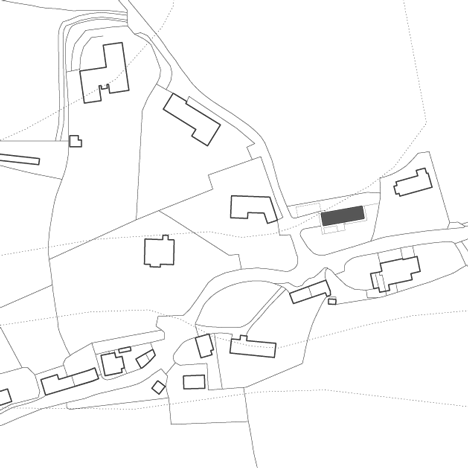
The collectors supply all domestic hot water needs and supplement the under floor heating system. A Mechanical Ventilation Heat Recovery (MVHR) system efficiently ventilates every space during the winter months. A Klargestor Biodisk operates as a sealed ‘waste water processing plant’ in the garden.
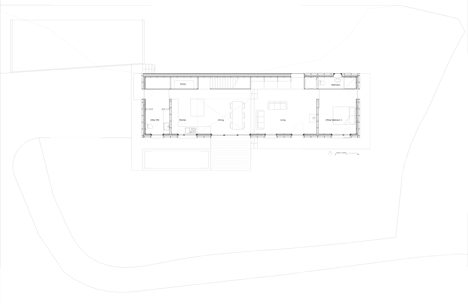
Click for larger image
Materials
Ty Pren translates literally as 'House of Wood', as timber drove the design strategy throughout. The building was clad in larch, sourced and felled from the client’s estate 2 miles away, and subsequently milled on site. The untreated cladding has a predicted life of 25 years, 8 larch trees have been planted on the client’s estate to replace this when necessary. The removed cladding will be burnt to heat the house. Recycled welsh slates from derelict buildings on the estate wrap over the roof and down the exposed north wall.
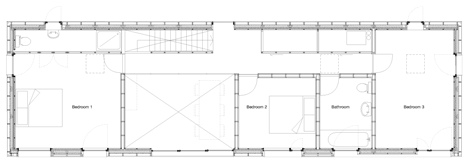
Click for larger image
The east, south and west ‘Solar Elevations’ incorporate a more filigree larch skin. The use of Structural Insulated Panels (SIPs) coupled with the high performing windows has resulted in a super airtight building. Secondary insulation (Thermafleece) made from a sheep’s wool blend was used to reach a U-Value of 0.15W/m2K in the walls. Internally, locally sourced oak was used on the fit-out, and the entire north wall constructed from sustainably sourced birch faced plywood. Lime based plasters and paints from Ty Mawr lime were used throughout. These natural materials are non-toxic and have a low embodied energy.

Click for larger image
Exterior
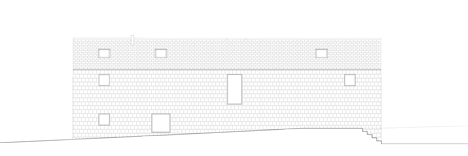
Click for larger image
The solar facades include deep-set window reveals that prevent excessive solar gain, while sliding shutters avoid overheating to the first floor spaces. The larch was sawn into chamfered battens, mounted 10 mm apart and set out on 100 mm vertical studs. This improves ventilation, produces a filigree appearance to the rain screen cladding and incorporates flush eaves details that emphasise the crisp 'long house' typology. Larch boards are inserted into the window reveals, covering the window frames and highlighting the punched openings.

Click for larger image
Interior
The plan is modernist in its simplicity, set out on a 1.2 m grid, driven by the standard SIP panel and sheet material size. The continuous birch-faced ply north wall incorporates all the services and utilities, including bathrooms, stair, pantry, storage and solar thermal store. This wall is articulated by home-grown oak studs with shadow gaps running along the datum lines of the house.
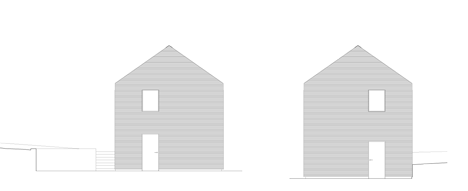
Click for larger image
The pop fit doors deliver a seamless and subtle wall, structuring the space. The stair is recessed into the depth of the back wall, emerging on the viewing gallery with direct views north, west, east and framing Pen Y Fan to the south. Welsh oak floorboards run the length of the upper gallery and throughout the lower ground floor expressing, the linear design.
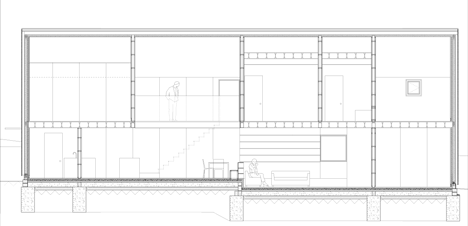
Click for larger image
Performance
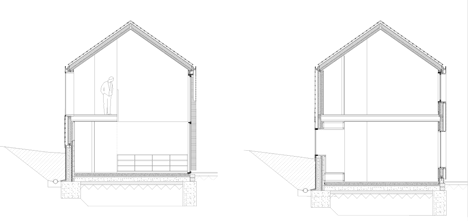
Click for larger image
The dwelling has been occupied for one year now and initial user feedback has been excellent. The building only requires active heating throughout 2 months of the year, and sustains internal temperatures through passive solar heating in the shoulder seasons. We intend to carry out further detailed analysis to determine if the performance meets the projections. A BREEAM assessment is due to be carried out in the Autumn.
Ty Pren is an exceptionally sustainable house, which came about through the close collaboration of the client, design team and contractors to deliver a uniquely local and sustainable building. The intention has been to push the environmental debate surrounding green homes and will hopefully set a precedent of excellence for future developments in Welsh housing.
See also:
.
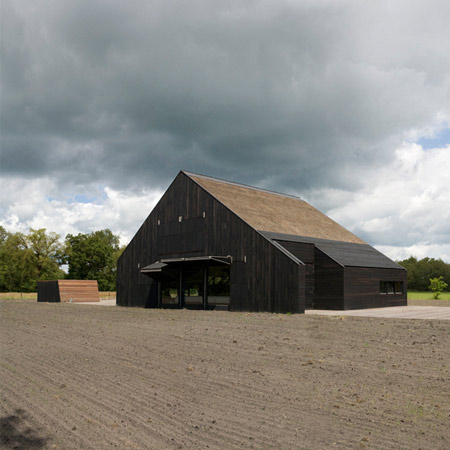 |
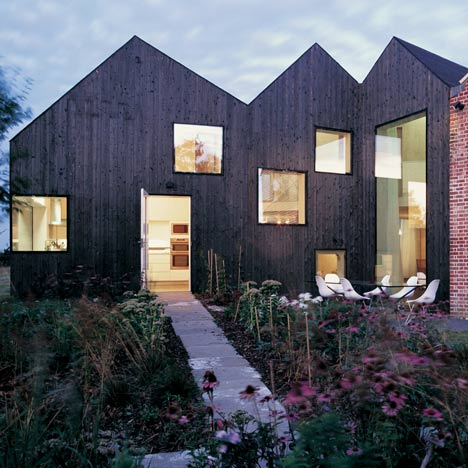 |
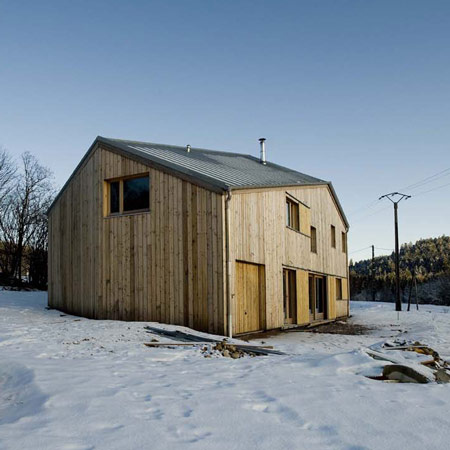 |
| Het Entreehuis by Bureau B+B |
Hunsett Mill by Acme |
Wooden House by Atelier Martel |